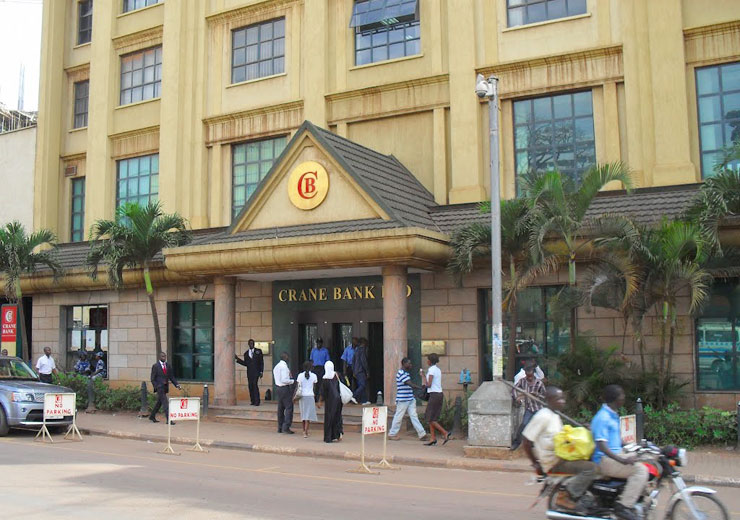
The Auditor General, Mr John Muwanga, has faulted Bank of Uganda for not following proper procedures over the sale of Crane Bank and closure of six other banks pointing to possible fraud in the transactions.
In his 94-page audit report to Parliament, Muwanga found that there were no guidelines/regulations/ procedures or processes for selecting buyers of assets of Crane Bank Ltd.
“I observed that there were no guidelines/regulations or policies in place to guide the identification of purchasers of defunct banks. There were also no guidelines to determine the procedures to be adopted by the Central Bank in the sale/transfer of assets and liabilities of the defunct banks to the identified purchases,” he notes.
The practical implication of this is that there was an opportunity for fraud and collusion between BoU officers, transaction advisers and potential buyers.
The Auditor General also notes that he could not establish how Dfcu was picked as a buyer and how terms of the Purchase and Assumption (P&A) agreement were reached.
“I was not provided with the negotiation minutes leading to the P&A agreement. In the absence of the minutes, I could not determine how BoU selected the best evaluated bidder and how the terms in P& A were determined,” Muwanga notes in his report.
This implies that Bou and its advisors just picked whoever they wanted to sell to, hence the winning bid and terms of P&A were reached between BoU and Dfcu in a non-transparent manner.
No valuation of Crane Bank assets
Another glaring anomaly the AG points out in his report is that there was no valuation of assets and liabilities of CBL prior to its sale as required under Financial Institutions Act (FIA).
“On April 10, 2018, I requested for P&A agreement, including details of the assets and liabilities transferred after taking into account the requisite valuation. I noted that BoU did not carry out a valuation of the assets and liabilities of CBL. In the absence of the valuation, I could not establish how the terms for the transfer of assets and liabilities in the P&A were determined.”
The implication is that the buyer got a bonanza because seller did not value assets. This resulted into erosion of value of the assets and consequently, loss to tax payer, shareholders and creditors.
It was also dumbfounding to note that BoU relied on the seller to determine the value of the assets sold, which is contrary to the FIA.
“In a meeting with the BoU’s outgoing executive director of supervision held on June 13, 2018, at BoU offices, the directors admitted that the BoU did not carry out a valuation of the CBL assets and liabilities but relied on inventory report and the due diligence undertaken by Dfcu to arrive at P&A agreement,” Muwanga notes.
“I also noted that the P&A did not have complete details of assets and liabilities transferred to Dfcu with their corresponding values; I was therefore, unable to establish the status of assets and liabilities transferred to Dfcu.”
BoU could also not provide the Auditor General details of loans and advances transferred to Dfcu and evidence of valuation of assets before sale hence it was insufficient to respond to his observation.
Muwanga also points out that he could not establish how consideration of Shs200bn was derived from a bad book of Shs570.38bn. This could point to fraud between Dfcu, transaction advisors and BoU as the Shs570.38bn bad book was fully collateralized.
The report also reveals when BoU took over the bank, it increased the shareholder capital deficit from Shs130bn which was in the PWC inventory to Shs439.72bn as stated in an EDS memo just three months later.
No plan to revive CBL as required by law
Muwanga notes that despite BoU injecting Shs478.8bn taxpayers’ money in CBL, there were no plans to revive the bank as required under the law. The process of injecting these funds and whether there was a justification for it was also queried.
“I was unable to examine CBL operations during Statutory Management to determine that the funds injected reflected the liquidity shortfall at this time,” he notes.
The report also notes that Dfcu used $8m (Shs27bn) shareholders money to pay its debts to BoU.
Other banks
Muwanga also queried BoU officials on the flaws in the closure of Teefe Bank (1993), International Credit Bank Ltd (1998), Greenland Bank (1999), The Co-operative Bank (1999), National Bank of Commerce (2012) and Global Trust Bank (2014).
In the report, the Muwanga reveals BoU sold assets of ICB, Greenland, Cooperative, GTB and NBC worth Shs164b at a discount of 80 per cent, yielding only Shs32b.
In the case of ICB, Greenland and Cooperative Bank, the total loan portfolio sold at Shs135b included secured loans of Shs34.5b which had valid legal, or equitable mortgage on the real property and were supported with legal documentation but were sold to Nile River Acquisition Company at a discount of 93 per cent.
The audit report was yesterday laid in Parliament and the Speaker forwarded it to the Committee on Commissions, Statutory Authorities and State Enterprises (Cosase) for scrutiny.
BoU officials and other stakeholders/witnesses will soon be summoned to the committee to answer queries raised by the AG before a committee report is sent to parliament for debate.
It should be recalled that the audit into the defunct banks was prompted by petitions from Crane Bank shareholders and Central Bank employees who petitioned Parliament demanding investigations into what they called the fraudulent sale of Crane Bank and also issues surrounding the closure of other banks.